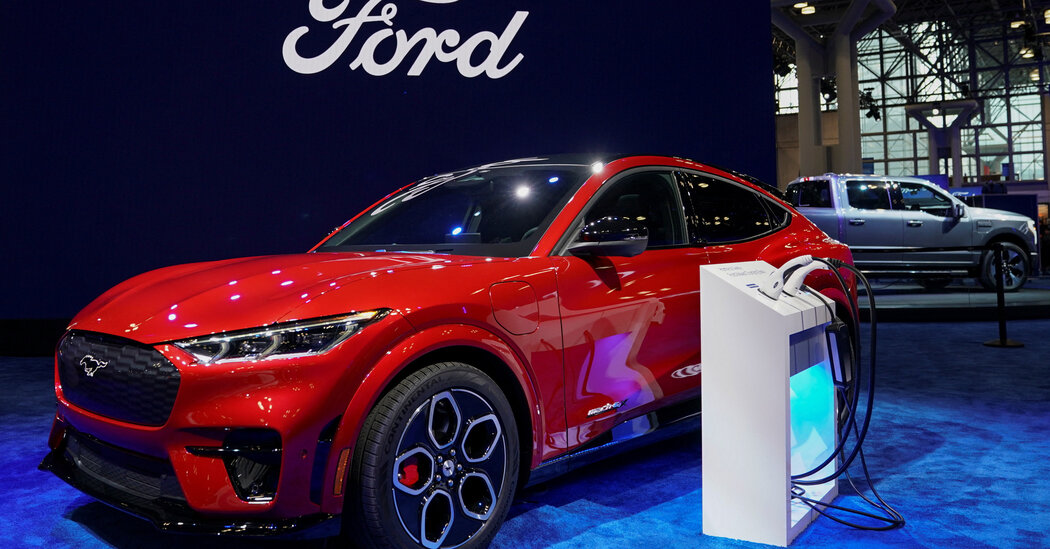Google I/O: AI Is Embedded in Search, Building on Tech’s New Craze
When the San Francisco start-up OpenAI released ChatGPT late last year, the A.I. chatbot looked like the first significant threat in decades to Google. One day, tech insiders thought, it could make Google’s internet search engine look old and stodgy.
Google executives vowed a fast response to protect the company’s $162 billion franchise and said that artificial intelligence would be woven throughout its products, from the search engine to email.
On Wednesday, at its annual conference in Mountain View, Calif., the company demonstrated some of what it has been working on. Google said its search engine will begin incorporating responses generated by A.I. at the top of query results pages and allow users to ask follow-up questions.
It was a notable step toward Google’s embrace of A.I., which many experts believe could remake the tech industry. Google was a pioneer in the technology, but had been reluctant to do too much with it because A.I. comes with risks, like spreading false information.
But Google, along with the rest of Silicon Valley, was surprised by the success of ChatGPT. In December, Google declared a “code red” to find ways to incorporate the technology behind ChatGPT, called generative A.I., into its own products.
Google said at its conference on Wednesday that it has now embedded its latest A.I. technology into 25 products, including the search updates and a feature to help users write emails in Gmail.
“Seven years into our journey as an A.I.-first company, we are at an exciting inflection point,” Sundar Pichai, Google’s chief executive, said at the conference. “With generative A.I., we’re taking the next step, with a bold and responsible approach, we are reimagining all of our products.”
The company also doubled down on its hardware ambitions, releasing two new smartphones and a tablet. On the high end was the Pixel Fold, Google’s first folding phone. For the budget minded, it offered the Pixel 7A, a phone that costs $500. The company made its Pixel Tablet both portable and able to dock on a speaker, so it can function like a smart home display.
Google has been racing against OpenAI and its partner, Microsoft. In February, Microsoft demonstrated how the newest version of Microsoft’s search engine, Bing, incorporates a chatbot that works with the technology developed by OpenAI.
But Google is still taking a more measured approach than its main competitors. The company did not include a chatbot, which can be prone to making up false information, in its search engine. Instead, Google said it will use A.I. to provide some answers, which will be corroborated by authoritative websites, and it will continue including ads in responses.
Liz Reid, a Google search vice president, said in an interview ahead of the conference that users expected the company to have high-quality information and it did not want to undermine that trust.
“The technology is early,” Ms. Reid said. “It’s amazing in some ways and it has a bunch of challenges in other ways.”
To work with the latest search features, users need to sign up for Search Labs, a new effort that allows users and the company to test experimental features. The New York Times previously reported that Google will let up to 30 million people in the United States use the updates by the end of the year.
In March, Google released Bard, an experimental chatbot meant to compete with ChatGPT. Google on Wednesday broadened access the tool, bringing it to more than 180 countries and territories in English, and also offering it in Japanese and Korean.
Mr. Pichai also discussed the company’s efforts to build more powerful A.I. technology. He unveiled the latest version of that more powerful technology, Pathways Language Model 2, or PaLM 2, and said work had begun on an even larger model named Gemini.
A.I. models are the huge systems that are used to develop artificial intelligence, and so far only a handful of companies have the resources to develop them. While protecting the search business is essential to the company’s future, Google could make billions from allowing other companies to use its cloud computing services to develop their own A.I. services.
Google said it made Bard, which can generate emails, shopping lists and poems, more intelligent and creative by running it on PaLM 2. The chatbot will be able to show and interpret images and allow users to export responses to Gmail, Docs and other applications.
The company has started integrating generative A.I. into its Workspace applications, including Gmail, Docs and Sheets. Users will be able to use brief text descriptions to create images for a slide deck or draft documents, with options to change the writing style to be more professional or casual.
Since ChatGPT was introduced, Google has faced criticism from tech industry insiders that it had not moved fast enough to improve its search. But Ms. Reid said the company’s large number of users was “the chorus we should listen to the loudest.”
“There is still huge opportunity in the world in meeting people’s information needs and there will always be lots of people trying to solve it, and I think that’s great,” she said. “It will help us — help everyone — evolve.”
Investors have been closely watching Google’s A.I. progress, and they have been concerned about the competitive threat from OpenAI and Microsoft. Mark Mahaney, an analyst at Evercore ISI, said in an interview that this year’s presentation did not “end the concerns, but it partially addresses them.”
“They needed to remind people that they’ve been doing a lot of innovation in A.I. for a long time,” he said, “and they got that point across.”


